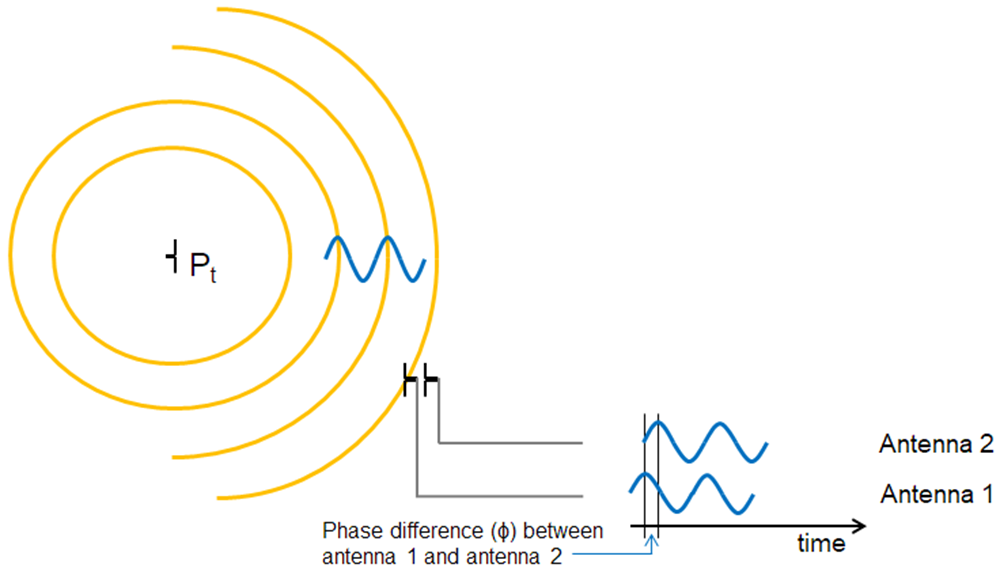TIDA029A july 2019 – june 2023 CC2640R2F-Q1 , CC2642R , CC2642R-Q1
- 1
- Bluetooth Angle of Arrival (AoA) Antenna Design
- Trademarks
- 1Introduction
- 2Angle of Arrival Antenna Design Considerations
- 3Dipole Antenna Array
- 4Calculating AoA From IQ Measurements
- 5References
- 6Revision History
1 Introduction
Bluetooth® angle of arrival (AoA) measures the angle or direction a Bluetooth Low Energy (BLE) transmitted signal approaches a Bluetooth receiver. To calculate the AoA, two or more antennas are required to measure the phase of an incoming signal.
 Figure 1-1 Transmitter Phase Measured by
Antenna Array
Figure 1-1 Transmitter Phase Measured by
Antenna ArrayThe phase measurements from each antenna are used to calculate the AoA and determine the direction of the transmitted signal. This application note explains AoA antenna design considerations, shows test results from some antenna arrays, and demonstrates how to calculate the AoA measurement from the phase measurement data of the antenna array. For more background information on Bluetooth AoA, see the Bluetooth Low Energy Angle of Arrival (AoA) SimpleLink Academy and the BLE-Stack User's Guide.